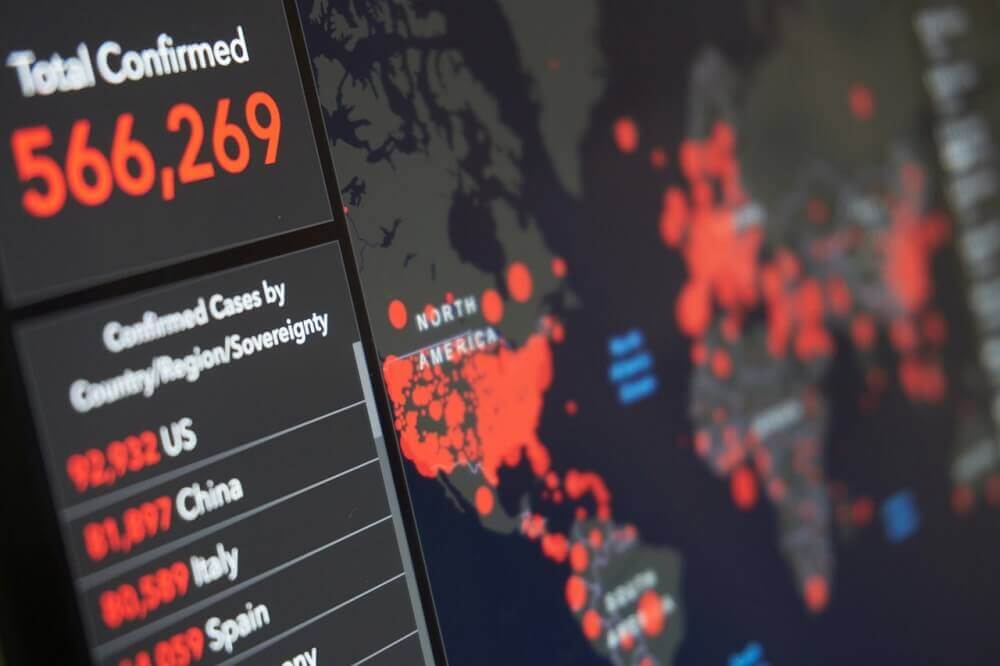Before the Novel Coronavirus brought the world to its knees, no one could have imagined that tackling an epidemic can be so challenging. The world has seen large scale and recurring epidemics – notably, the Lassa fever turning into an endemic in Nigeria and parts of West Africa as well as the outbreak of Severe Acute Respiratory Syndrome (SARS) in China and neighboring Asian economies in 2002-03. We had the World Health Organization (WHO) labelling poliomyelitis as a Public Health Emergency of International Concern (PHEIC). But the Novel Coronavirus and its mutating strains have visibly gone much beyond to deepen into the world’s most dreaded pandemic- infecting people in 215 countries and claiming 3.5 million lives. Owing to its sheer scale and untrammeled spread, the Covid-19 pandemic has paraded the gaps in epidemic response management. This pandemic has shown why human efforts won’t suffice on their own and how technology can take over. Not as a silver bullet to fix the gaps but by providing a seamless platform where data and analytics drive evidence based decision making.

Why We Need Technology To Tame A Pandemic?
Covid-19 has been touted as a black swan event with the WHO declaring it as a global emergency on January 30, 2020. Not only has the pandemic debilitated public healthcare, it has created a ripple effect on almost every facet of human life. In their efforts to flatten the curve, nations sealed borders, imposed travel curbs and enforced lockdowns. However, most of these measures to curb a raging pandemic were piecemeal in nature without rich data for actionable insights. This is where technology led interventions can streamline pandemic management by striking the balance between saving lives and keeping the economy buzzing. Technology aided pandemic response offers myriad capabilities like:-
- Identifying and tracking suspect virus carriers
- Monitoring the health of critical and high priority virus affected cases
- Contact tracing of the vulnerable & high risk population
- Enforcing strict social distancing or isolation
- Optimizing utilization of healthcare resources in arresting infection & mortality
- Planning infrastructure upgrade for handling rising caseload
- Ensuring essential supplies or any emergency needs for citizens
- Providing financial relief and assistance to vulnerable population
How CSM Recalibrated Pandemic Management with Data Driven Dashboard
CSM along with its partner SAS India developed an end-to-end tech stack for Odisha to help the government there to shore up pandemic response with data driven insights. The state-of-the-art Covid dashboard enabled decision makers at all levels to take stock of the performance of the pandemic related interventions statewide. The dashboard offered advanced visualization of Covid related KPIs (Key Performance Indicators) such as transmission of infection, demographic and geographic profiling, infrastructure availability and population dynamics like existing population density and the count of inbound migrant workers. Moreover, predictive models enabled by the dashboard help detect the population vulnerable to the pandemic and accordingly, take decisions on enforcing complete lockdowns or calibrated curbs so that public health safety can go hand in hand with economic activity.

Over and above rich visualization capabilities, the dashboard supports advanced analytical and predictive modeling tools- a feature that aids the government to draw the future decision curve. The analytics support offered by the dashboard enabled the state government to conduct a medical infrastructure simulation by analyzing data on the number of patients, potential increase in total caseload and taking stock of existing health infrastructure readiness. Unlocking the power of data analytics, the government could also perform simulation analysis to extract insights on the impact of lockdown curbs and the influx of homebound migrant workers on the infection rate. With this dashboard, the government could access data on the volume of infected people at the most granular level which formed the foundational strategy for planning relief, issuing Standard Operating Procedures (SOP), testing and quarantining.
In this seamless dashboard, governments can access the updated key metrics and trends related to the pandemic through more than 50 interactive charts, graphs and diagrams. It has drill-down capabilities to depict the status, location, demographics, spread and trend analysis of cases across the state.
This intuitive dashboard can be the core mandate of a futuristic strategy for epidemic response. We can’t prevent epidemics to recur in the future. But we can manage them better, save countless lives and temper their impact on the economy with a digital ready strategy.


























































We will verify and publish your comment soon.